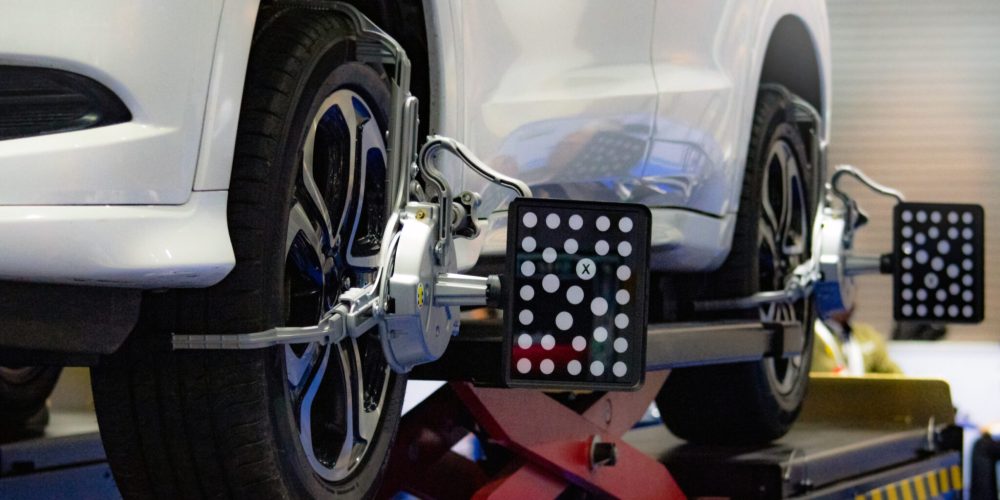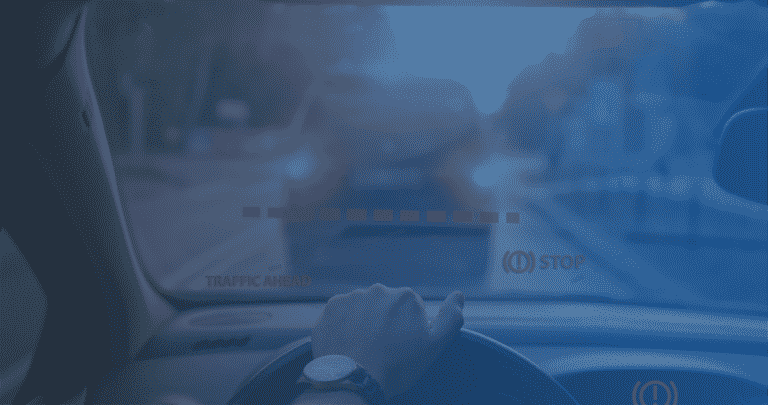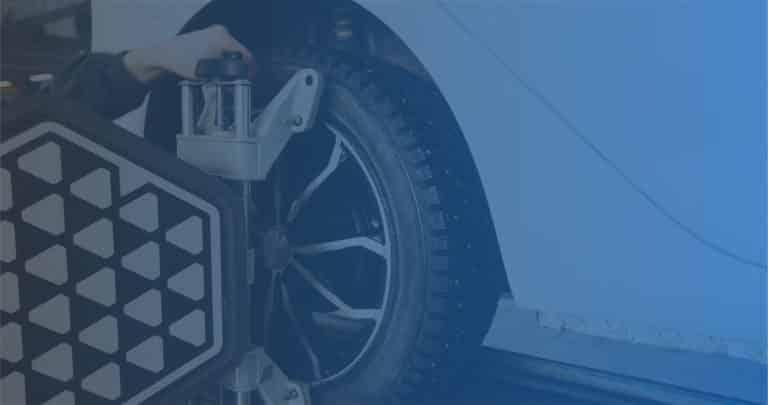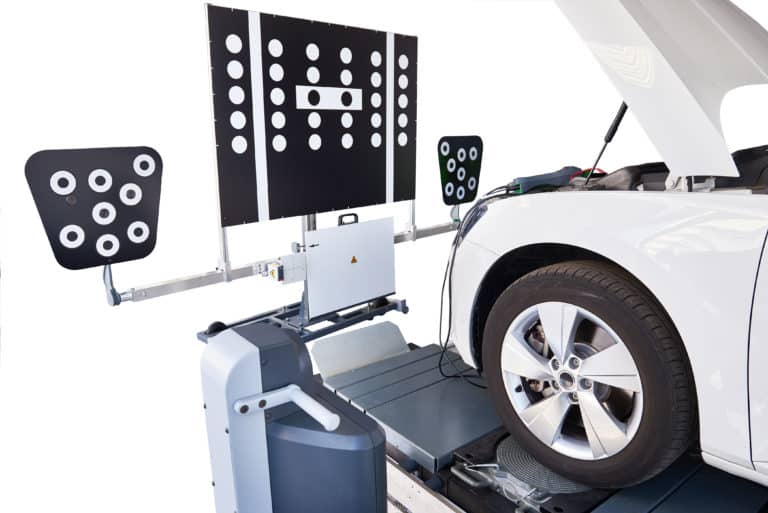Vehicles are now designed with advanced driver assistance systems (ADAS), and the demand for ADAS is increasing. But did you know ADAS systems are impacted by regular car maintenance — specifically, wheel alignments?
Many automakers now require ADAS calibration after wheel alignments because it is critical to the functionality of vehicle ADAS systems like lane keeping assist and automated emergency braking. The slightest wheel alignment change impacts how ADAS systems work. Failing to calibrate poses serious safety risks to drivers.
Here is how to understand the relationship between wheel alignments and ADAS systems and why a new calibration is critical to ADAS sensors.
How Wheel Alignment Affects ADAS
Calibration is required whenever there is a change in wheel alignment on an ADAS-equipped vehicle. This is because the system’s sensors must accurately calibrate to the new wheel alignment. For example, if the toe angle changes, the sensors must be calibrated to account for the new alignment angle.
ADAS Sensor Functionality
ADAS systems rely on sensors mounted on the vehicle body to detect lane markings, obstacles, and other road features. Even a slight misalignment can have a significant impact on sensor performance. If the sensors are not properly aligned, they may not see these features, potentially leading to collisions.
Lane Departure Warnings
Lane departure warnings are an ADAS safety feature that alerts the driver when the vehicle drifts out of its lane. ADAS systems rely on cameras and sensors that detect road markings, so your wheels must be aligned correctly to ensure accuracy. Poorly aligned wheels can lead to an inaccurate reading of the road markings — resulting in false alarms or failure to detect lane drifts.
Adaptive Cruise Control
Many ADAS systems, such as adaptive cruise control, rely on finely calibrated sensors to function correctly. For example, the sensor will not see the leading vehicle correctly if the wheel alignment or thrust angle is off. ADAS systems can be thrown off if your car’s alignment is slightly out of position. When sensors aren’t calibrated correctly, it can lead to dangerous driving risks.
All-in-One ADAS/Alignment Racks
Alignment is essential to accurate ADAS system calibration. Due to this, several ADAS equipment providers have created specialty alignment racks that can double as calibration fixtures. ADAS calibration equipment allows auto shops to perform both services on the same equipment, saving time and money.
Benefits of ADAS Calibration After Wheel Alignments
In addition to best vehicle safety practices, ADAS system calibration after a wheel alignment provides vehicle owners several benefits. Here are two of the biggest:
Sensor Accuracy
The ADAS system calibration process involves using targets placed at specific locations around the vehicle. A sensor and the associated ADAS calibration are only as accurate as the vehicle’s wheel alignment. For example, if the vehicle’s thrust angle is out of alignment, the vehicle’s driving direction will not be the same as the sensor’s point of view.
Enhanced Driver Safety
Calibrating your ADAS system after a wheel alignment ensures that your sensors’ performance is functioning as it should. When the sensors are calibrated correctly, drivers can receive the full safety benefits that ADAS systems provide.
Turnkey ADAS Solutions from Car ADAS Solutions
Now that you know how wheel alignments impact ADAS system functionality, you know that you can’t just skip calibrations after performing alignment services on ADAS-equipped vehicles. The next step is finding an ADAS calibration center near you or planning an ADAS solution for your shop. Car ADAS provides turnkey ADAS solutions for auto shops, dealerships, and standalone calibration centers. We’ve helped businesses nationwide to plan and implement ADAS solutions. Learn how we can help you.







